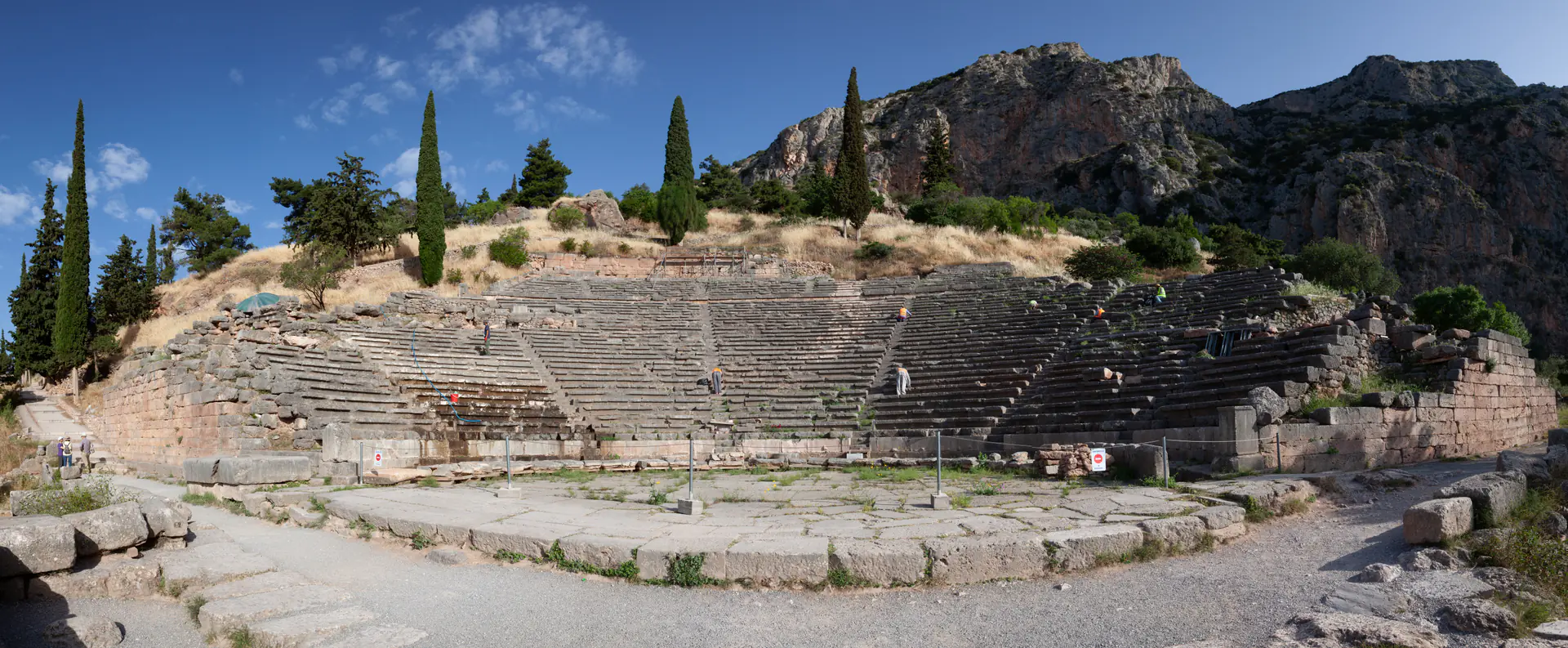
Delphi's Sacred Oracle and Apollo's Ancient Mountain Sanctuary
Where Greeks Consulted the Divine Pythia's Prophecies
About This Site
Delphi represents the religious centre and symbol of unity of the ancient Greek world, where the Oracle of Apollo delivered prophecies that shaped Mediterranean civilisation for over a millennium. This sacred sanctuary, nestled dramatically on Mount Parnassus slopes, harmoniously blends outstanding archaeological treasures with superb natural landscape, creating the 'navel of the world' that ancient Greeks revered. From the mystical Pythia priestess to the prestigious Pythian Games, Delphi demonstrates exceptional testimony to ancient Greek religious practices, cultural achievements, and architectural mastery that influenced Western civilisation. Today's visitors experience this UNESCO World Heritage Site's profound spiritual significance whilst exploring remarkable ruins, world-class museum collections, and the enduring legacy of humanity's quest for divine guidance.
Why It Matters
As the site of the Oracle of Apollo and the "navel of the world", Delphi demonstrates outstanding universal value through its harmonious blend with the superb landscape, its role as a masterpiece of human creative genius, and its exceptional testimony to ancient Greek civilisation and religious practices that influenced the entire Mediterranean world.
Sacred Treasures of the Ancient World
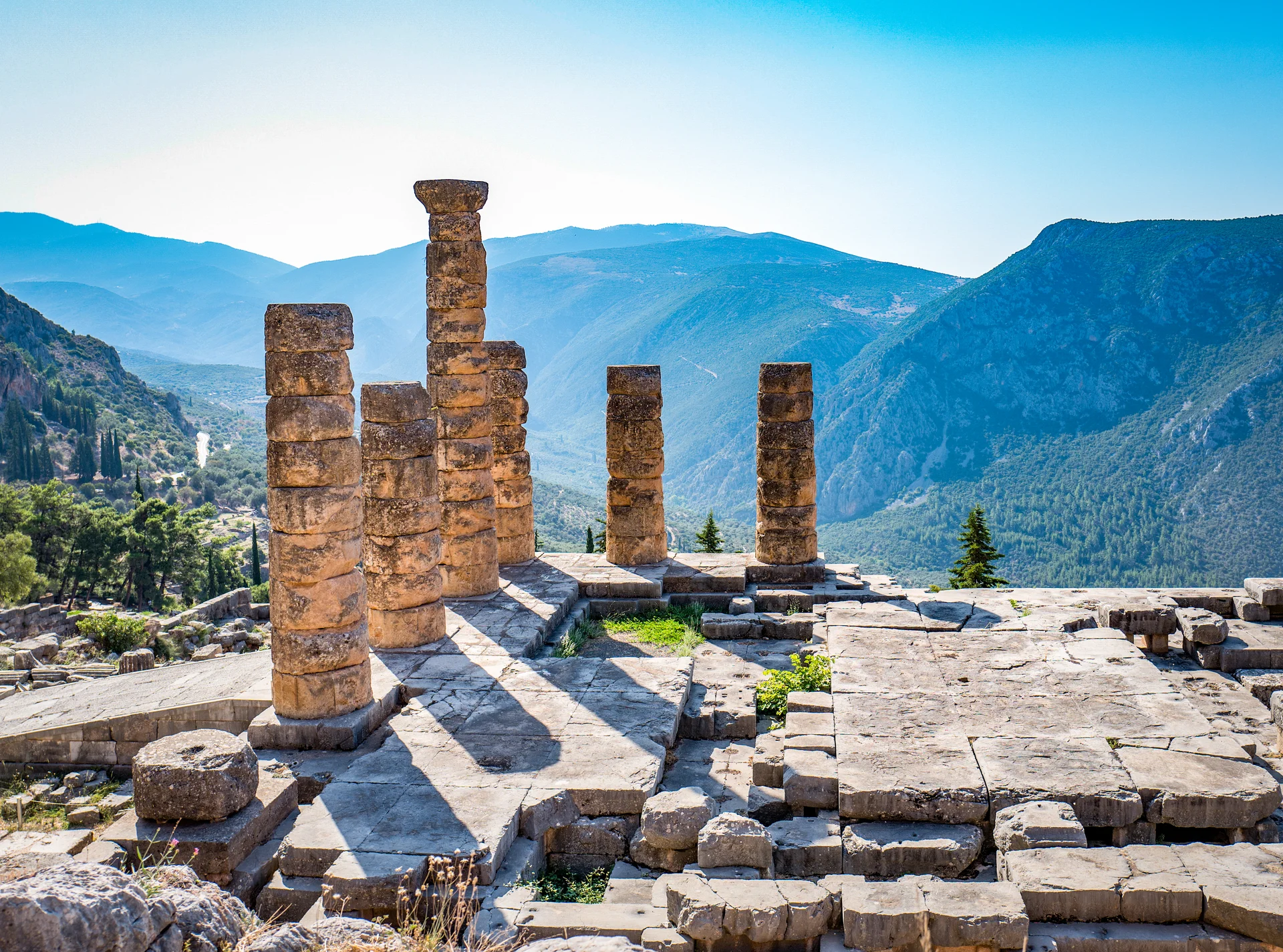
Oracle of Apollo and the Pythia
Experience the profound spiritual heart of ancient Delphi at the Temple of Apollo, where the mystical Pythia priestess delivered prophecies that influenced major decisions across the Mediterranean world for over a millennium. Seated on her sacred tripod above a chasm believed to emit divine vapours, the Pythia entered trance-like states to speak Apollo's words. These oracular pronouncements guided everything from military campaigns to colonisation efforts, making Delphi the spiritual centre of the ancient Greek world. The oracle's influence extended across cultural boundaries, consulted by kings, generals, and common citizens seeking divine guidance. Walking among the temple foundations, visitors can contemplate this extraordinary religious phenomenon that shaped Western civilisation's relationship with the divine.
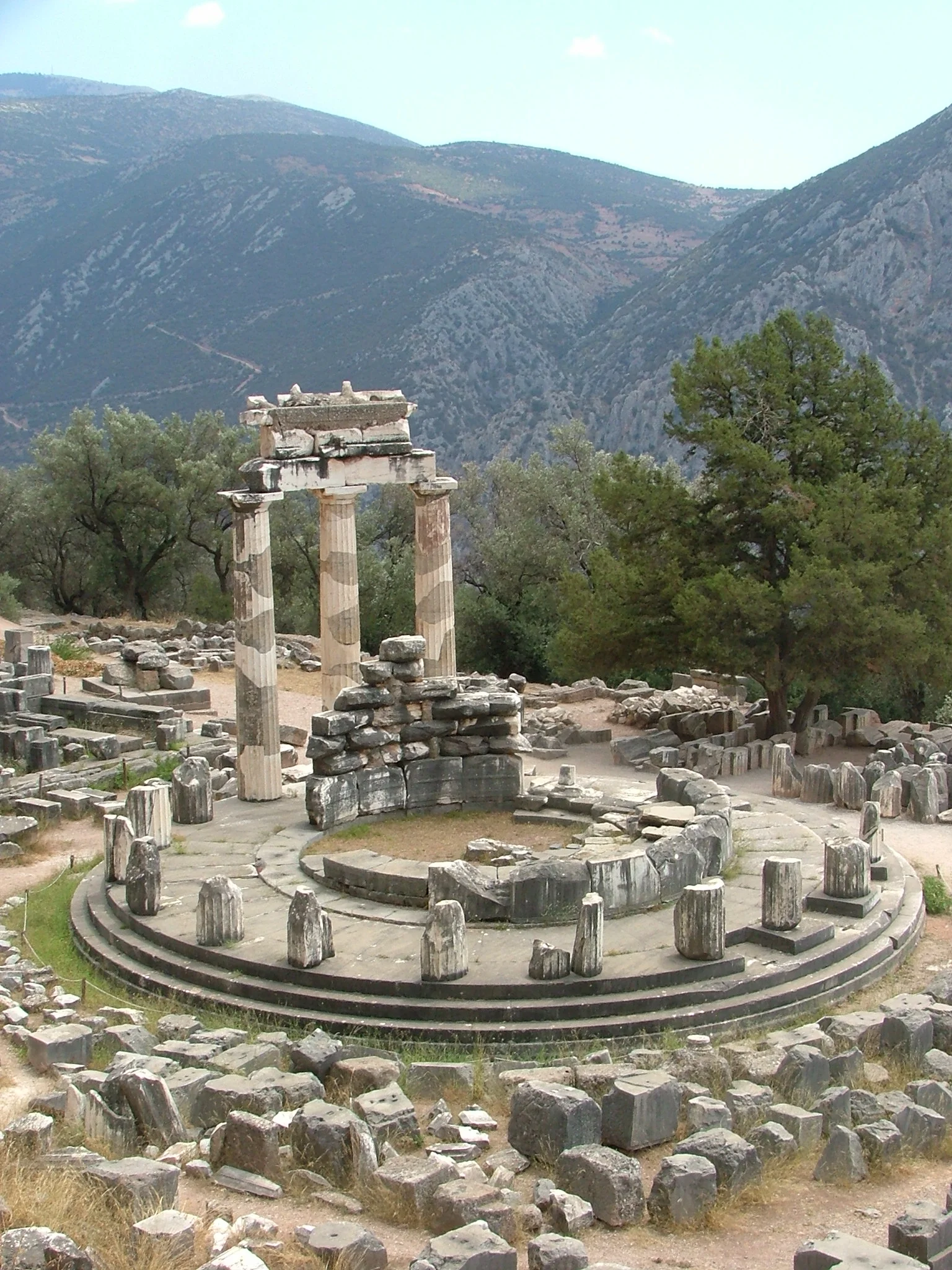
The Sacred Tholos of Athena Pronaia
Discover one of Delphi's most photographed and enigmatic monuments, the Tholos, standing as a masterpiece of ancient Greek circular architecture within the Sanctuary of Athena Pronaia. Built between 380-360 BC by the architect Theodorus Phoceus, this elegant structure features 20 Doric columns arranged in perfect proportion with an exterior diameter of 14.76 metres, whilst the interior housed 10 Corinthian columns. Constructed from finest Pentelic marble, the Tholos represents the pinnacle of classical architectural harmony, though its exact religious purpose remains mysteriously unknown to archaeologists. The partially restored monument demonstrates sophisticated engineering and aesthetic sensibilities that defined 4th-century BC Greece, serving as architectural guardian to the main Apollo sanctuary above.
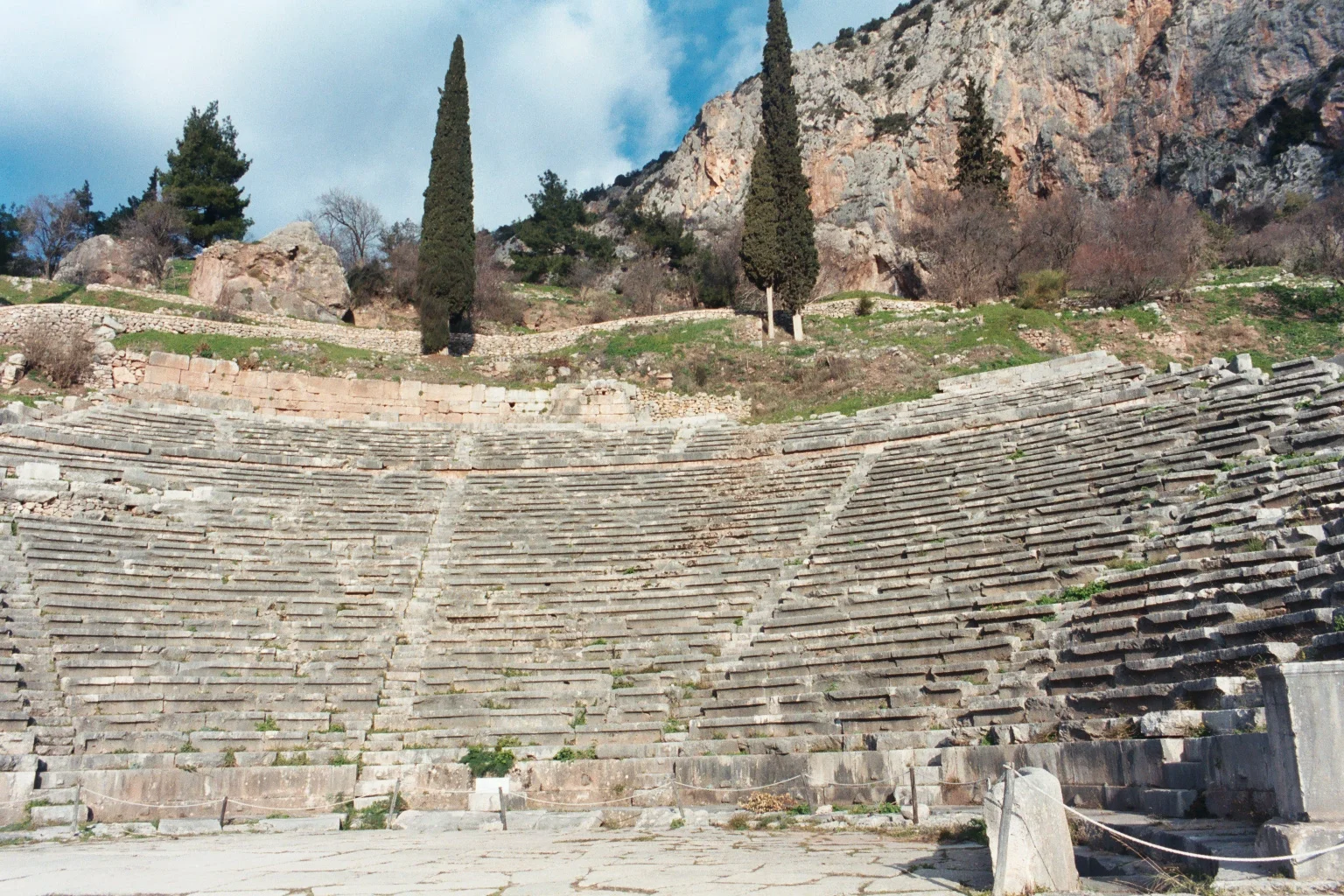
Ancient Theatre and Pythian Performances
Marvel at the magnificent 4th-century BC theatre of Delphi, which hosted musical and dramatic competitions of the Pythian Games that ranked second only to Olympics in ancient Greek importance. Carved into the mountainside above the Temple of Apollo, this exceptionally well-preserved venue accommodated 4,500 spectators who gathered every four years to witness performances honouring Apollo, god of music and poetry. The theatre featured competitions in singing, instrumental music, poetry recitation, and dramatic performances, reflecting cultural sophistication that defined ancient Greek civilisation. The acoustics remain exceptional today, whilst panoramic views over the sanctuary and Phocis valley create a setting of unparalleled dramatic beauty. This venue embodied the Greek ideal of combining physical, intellectual, and artistic excellence in sacred competition.
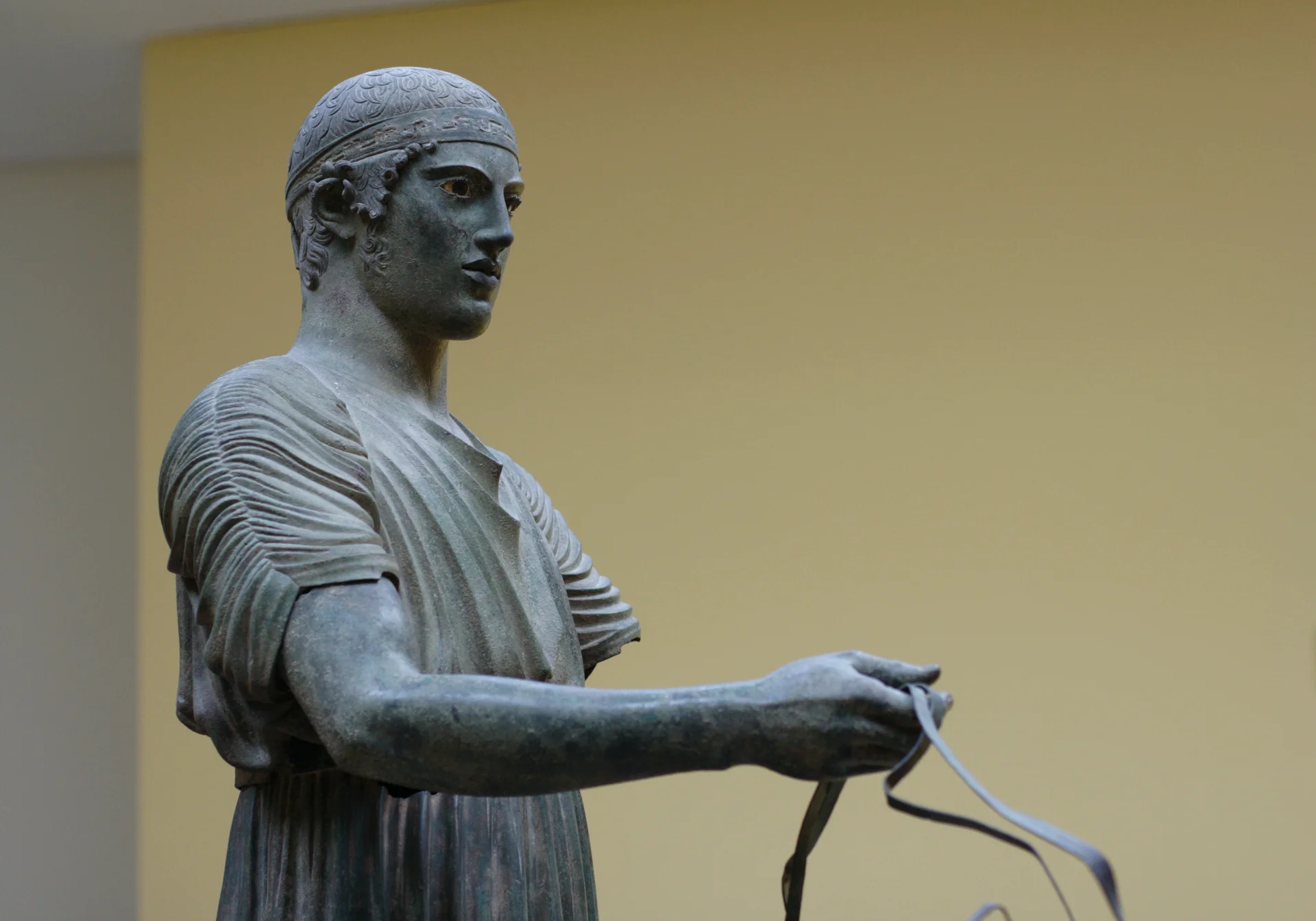
Charioteer of Delphi and Archaeological Treasures
Explore the world-renowned Delphi Archaeological Museum, which houses one of the finest collections of ancient Greek art, centred around the magnificent Charioteer of Delphi bronze statue from 475 BC. This extraordinary sculpture, discovered in 1896, represents the height of early Classical Greek bronze-working mastery and originally formed part of a victorious quadriga commemorating triumph in the Pythian Games. The museum's treasures span from Mycenaean times to Byzantine period, including the colossal Sphinx of Naxos, exquisite chryselephantine sculptures, and architectural fragments from Greek city-state treasuries. These magnificent artefacts reveal the immense wealth and artistic devotion that flowed to Delphi from across the ancient world, transforming it into a repository of Greek civilisation's finest achievements.
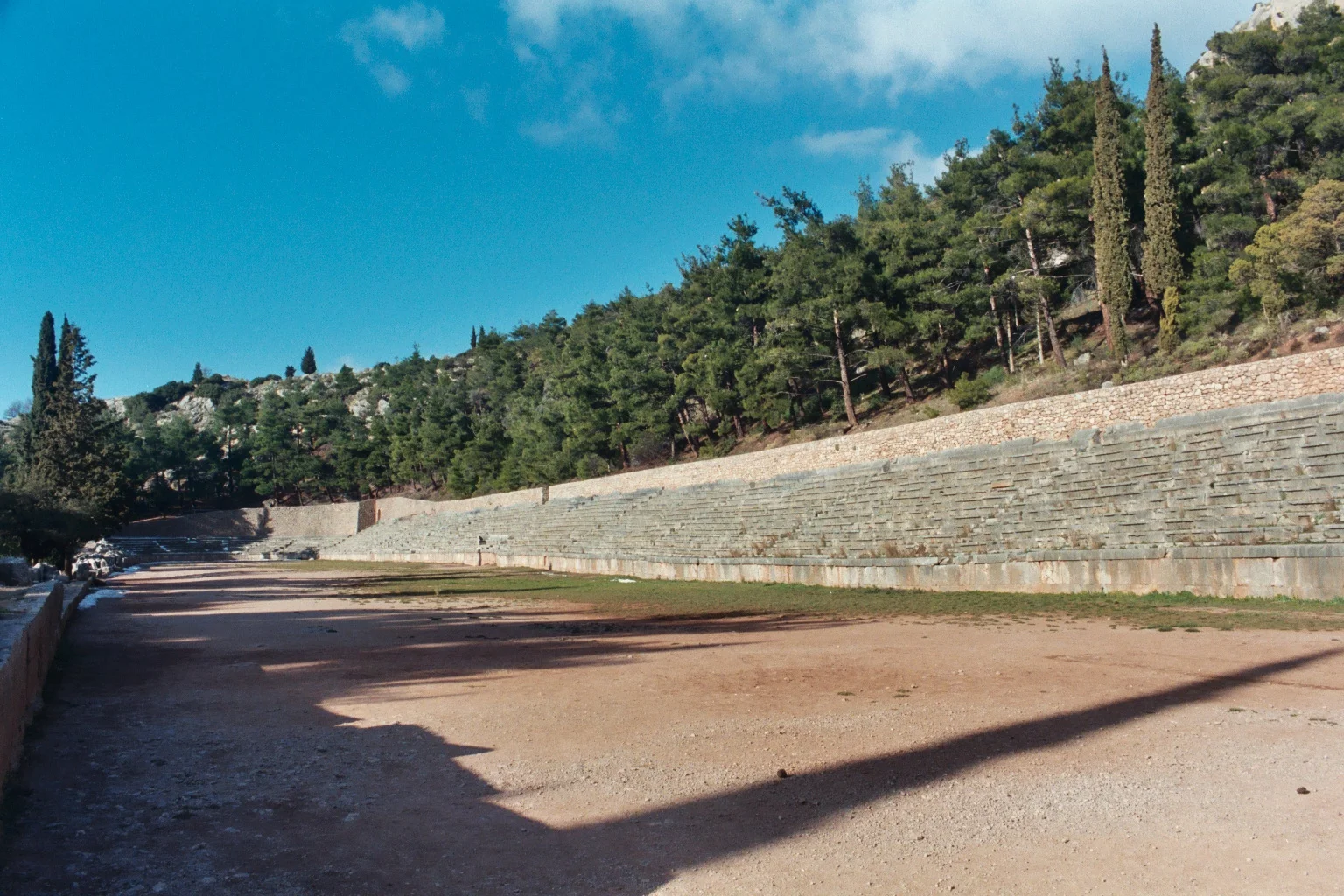
Stadium and the Pythian Games
Ascend to the highest point of the sanctuary to discover the ancient stadium where athletic competitions of the prestigious Pythian Games took place every four years honouring Apollo. Built in the 5th century BC and modified during Roman times, this 177-metre-long venue accommodated 6,500 spectators on stone seating carved into the mountainside. The Pythian Games uniquely combined athletic competitions with musical and artistic contests, embodying kalokagathia - the harmony of physical and intellectual excellence. Athletes competed in running, wrestling, boxing, and pentathlon, whilst poets and musicians performed in the theatre below. The games created a sacred truce that allowed safe passage for competitors from across the Greek world, reinforcing Delphi's unifying role in ancient civilisation.
Location & Planning
Located 180 kilometres northwest of Athens, accessible by car (2.5 hours) or KTEL buses. Combined tickets available online for archaeological site and museum. Modern village offers accommodations and dining.
Loading map...
Frequently Asked Questions
Delphi was the most sacred pan-Hellenic sanctuary in ancient Greece, home to the legendary Oracle of Apollo where the Pythia priestess delivered divine prophecies that profoundly shaped Mediterranean civilisation, political decisions, and colonisation efforts for over 1,000 years of continuous religious activity.
The Pythia was a specially chosen priestess who served as the divine mouthpiece of Apollo, delivering cryptic prophetic guidance to ancient Greeks from her sacred tripod positioned above a chasm in the Temple of Apollo at Delphi, entering trance-like states to channel the god's wisdom.
Ancient Greeks believed Delphi marked the exact geographical centre of the earth, commemorated by the sacred omphalos stone that Zeus placed there, making it both the spiritual and physical heart of their known world and the meeting point of divine and mortal realms.
Delphi is located 180 kilometres northwest of Athens in Central Greece, easily accessible by private car (approximately 2.5 hours), organised guided bus tours that include transport and expert commentary, or public KTEL buses departing from Terminal B in Athens requiring approximately 3 hours travel time.
April through June and September through October offer ideal weather conditions for exploring the mountainous archaeological site, avoiding intense summer heat whilst enjoying clear mountain views, comfortable walking temperatures, pleasant Mediterranean climate, and significantly fewer tourist crowds for enhanced exploration.
Yes, advance tickets are required and available online or at the entrance, with separate admission for the archaeological site and museum, though convenient combined tickets offer better value. EU students benefit from free admission when presenting valid student identification cards at the ticket office.
Wear comfortable, sturdy hiking shoes with good ankle support for uneven ancient stone pavements and steep mountain paths, comprehensive sun protection including wide-brimmed hat and high-SPF sunscreen, layered clothing to accommodate mountain temperature variations, and bring water bottle for hydration.
UNESCO World Heritage Criteria
Inscribed in 1987, this site meets 5 of UNESCO's 10 criteria for Outstanding Universal Value
Criterion (i): Masterpiece of human creative genius
Delphi represents a masterpiece of human creative genius through the Temple of Apollo's architectural refinement, the Tholos of Athena Pronaia's perfect circular harmony demonstrating advanced mathematical understanding, and sophisticated integration of monumental architecture with dramatic mountainous landscape creating unparalleled sacred atmosphere.
Criterion (ii): Interchange of human values
As the ancient Greek world's most influential oracle, Delphi facilitated extraordinary interchange of human values, spreading Hellenic religious concepts, architectural principles, and philosophical ideas throughout the Mediterranean whilst hosting representatives from across Greek civilisation, fostering cultural unity and diplomatic exchange.
Criterion (iii): Testimony to cultural tradition
Delphi provides unique testimony to ancient Greek religious practices and pan-Hellenic culture through the Pythia's oracular tradition that influenced major political and military decisions for over a millennium, representing the spiritual centre unifying diverse Greek city-states through shared religious devotion.
Criterion (iv): Outstanding architectural/technological ensemble
The sanctuary exemplifies outstanding architectural ensemble through harmonious integration of temples, treasuries, theatre, and stadium following the Sacred Way up Mount Parnassus' slope, demonstrating sophisticated Greek urban planning adapting monumental architecture to challenging terrain whilst creating processional sacred space.
Criterion (vi): Associated with events/traditions/ideas/beliefs/artistic works
Delphi remains directly associated with the profound concept "Know Thyself" inscribed at Apollo's temple, representing the philosophical and spiritual ideas that defined ancient Greek thought whilst serving as the mythological centre of the world marked by the omphalos stone.
Historical Context
Mycenaean Period (1450-1100 BC)
Early Bronze Age religious activity on Mount Parnassus slopes with archaeological evidence of primitive cult practices predating the classical Apollo sanctuary, establishing Delphi's initial sacred character and religious significance. These early practices laid foundations for the later monumental sanctuary complex that would become central to Greek religious life.
Archaic Period (8th-6th century BC)
Establishment of the Oracle of Apollo and construction of the first major temple marking Delphi's transformation into a major religious centre. The sanctuary becomes pan-Hellenic centre with city-states building elaborate treasuries to house valuable offerings and demonstrate their piety and wealth.
Classical Period (5th-4th century BC)
Peak of Delphi's influence with the Oracle consulted before major military campaigns and political decisions throughout the Greek world. Construction of the theatre, stadium, and the iconic Temple of Apollo that visitors see today, along with numerous monuments celebrating athletic and military victories.
Hellenistic Period (3rd-1st century BC)
Continued importance under Hellenistic kingdoms with architectural additions like the Tholos temple and expanded treasury buildings. Delphi maintains spiritual authority whilst adapting to the changing political landscape of post-Alexander Mediterranean, with new rulers seeking legitimacy through Apollo's oracle.
Roman Period (1st century BC-4th century AD)
Romans respect and support the sanctuary with emperors like Hadrian visiting personally to consult the Oracle and sponsor restoration projects. Gradual decline begins as Christianity spreads throughout the empire despite continued Roman patronage and imperial interest in maintaining traditional religious sites.
Byzantine Period (4th-15th century AD)
Official closure of the Oracle in 381 AD by Emperor Theodosius I as part of Christian suppression of pagan religious practices. Site gradually abandoned with local villages developing using ancient stones for construction materials, whilst the sanctuary's spiritual significance faded into historical memory.
Conservation & Protection
Current Conservation Status
Active archaeological conservation with Greek Ministry of Culture oversight ensuring preservation of this exceptional UNESCO World Heritage Site for future generations.
Conservation Challenges
- Mountain weather conditions causing stone erosion and structural stress on ancient monuments
- Tourism pressure requiring careful balance between public access and archaeological preservation
- Seismic activity monitoring due to Greece's geological instability affecting ancient structures
- Vegetation growth on archaeological remains requiring ongoing management without damaging fragile ancient surfaces
- Funding constraints for comprehensive restoration programmes affecting pace of conservation work across the extensive site
Active Conservation Efforts
- Systematic restoration of key monuments including Theatre seating and Tholos circular temple columns
- Advanced museum climate control systems protecting priceless Bronze Age and Classical period artefacts
- Digital documentation project creating detailed 3D models for research and virtual heritage preservation
- Sustainable tourism management programmes limiting daily visitor numbers during peak archaeological sensitivity periods
Image & Content Attribution
Research & Content Sources
Photography & Visual Media
Last updated: 9 October 2025